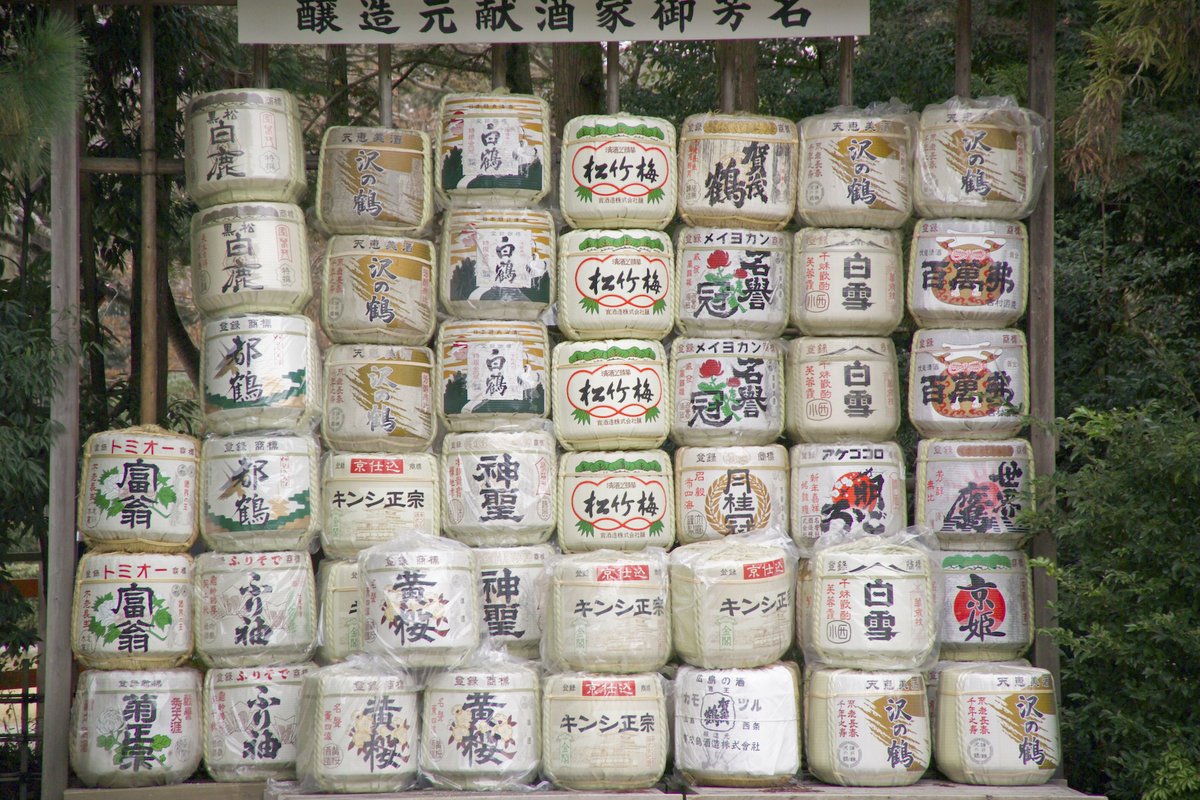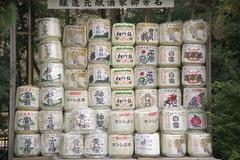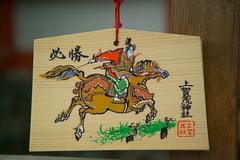
Kamigamo Shrine Kyoto: Visiting Hours, Tickets, and Guide to Historical Sites
Date: 14/06/2025
Introduction
Kamigamo Shrine, officially known as Kamo-wakeikazuchi Jinja (賀茂別雷神社), is one of Kyoto’s oldest and most important Shinto shrines. Established in 678 CE, it predates the city’s founding as the imperial capital and has played a central role in Kyoto’s spiritual and civic life for over a millennium. Recognized as a UNESCO World Heritage Site, Kamigamo Shrine is celebrated for its deep religious significance, historical architecture, and picturesque setting along the Kamo River. The shrine is renowned for its Heian-period architecture, unique purification sand cones (tatezuna), and vibrant festivals like the Aoi Matsuri, making it one of Kyoto’s essential historical destinations.
For detailed festival information and visitor tips, refer to the Kamigamo Shrine Official Website, Kyoto To Do, and Inside Kyoto.
Contents
- Introduction
- Historical Overview
- Architectural and Symbolic Highlights
- Visiting Information (Hours, Tickets, Access)
- Festivals and Events
- Visitor Tips and Nearby Attractions
- Frequently Asked Questions (FAQ)
- Visual Highlights
- Related Articles
- Conclusion & Call to Action
Historical Overview
Origins and Spiritual Significance
Kamigamo Shrine is dedicated to Kamo Wakeikazuchi no Kami, the thunder deity. According to legend, the shrine’s foundation is linked to the Kamo clan and the divine conception of its main deity by Tamayorihime. This mythological origin story underscores the shrine’s central role in the region’s spiritual legacy and its historic function as a protector against disasters.
Role in Kyoto’s History
When the imperial court moved to Heiankyo (Kyoto) in 794, Kamigamo Shrine, along with its sister shrine Shimogamo, became central to the city’s protection and prosperity. The shrine was one of the select Nijūnisha (22 shrines) receiving imperial patronage, and imperial messengers would report important events to its deity. Kamigamo Shrine’s status was elevated further during the Meiji era and it continues to be a site of imperial ritual participation.
Unique Features and Distinctions
- Tatezuna Sand Cones: Conical sand mounds symbolizing purification and the sacred presence of Mt. Koyama.
- Shake-machi District: Historic priest residences and scenic beauty spots near the shrine.
- UNESCO World Heritage: Part of the Historic Monuments of Ancient Kyoto.
Architectural and Symbolic Highlights
Key Structures
- Honden (Main Sanctuary): National Treasure, built in the nagare-zukuri style, dedicated to the thunder deity.
- Gonden (Temporary Sanctuary): Used during repairs or special rites.
- Romon Gate: A striking two-story vermilion gate marking the entrance to the sacred precincts.
- Tamabashi Bridge: An arched vermilion bridge reserved for priests and ceremonial participants.
- Hosodono and Hashidono Halls: Sites of important rituals and symbolic sand cones.
- Auxiliary Shrines: Including Katayama Miko Jinja (for the deity’s mother), Shingu Jinja (linked to water and agriculture), and Ota Jinja.
Gardens and Natural Features
- Shokei’en Garden: Designed in 1960, featuring seasonal blooms and a centuries-old tree symbolizing longevity.
- Omonoi Stream: Adds tranquil beauty and hosts purification ceremonies.
- Sacred Horse Stable: Visitors can interact with the shrine’s sacred horse during designated hours.
For architectural details, see Kamigamo Jinja Official Grounds.
Visiting Kamigamo Shrine
Visiting Hours
- General Hours: Open daily from 6:00 AM to 5:00 PM (last entry usually at 4:30 PM). Hours may vary during special events (Kamigamo Jinja Official Grounds).
Admission and Tickets
- Entry: Free to the main grounds.
- Special Areas: Some areas, such as the Nishimura House or exhibition events, may require a ticket (approx. 300 yen).
Getting There
- Address: 339 Kamigamomotoyama, Kita-ku, Kyoto 603-8047, Japan.
- By Bus: Kyoto City Bus #4 or #205 from Kyoto Station to Kamigamo Jinja-mae (approx. 20 minutes).
- By Taxi: Around 15 minutes from downtown Kyoto.
- Parking: Limited; public transport is recommended.
Accessibility
- Most grounds are wheelchair friendly, with paved paths and ramps in key areas. Some historic structures may have limited access.
Photography
- Allowed in outdoor areas. Please refrain from taking photos inside sanctuaries or during rituals.
Festivals and Events
Aoi Matsuri (Hollyhock Festival)
One of Kyoto’s three greatest festivals, held annually on May 15. The festival features a Heian-period imperial procession (Roto no Gi) from the Kyoto Imperial Palace to Shimogamo and Kamigamo Shrines, with over 500 participants in historic costumes and hollyhock decorations (Kyoto To Do, Matcha).
- Schedule: Procession departs at 10:30 AM from the Imperial Palace, arriving at Kamigamo Shrine around 3:30 PM.
- Viewing: Reserved seats are available for purchase. Best views near the Imperial Palace and Shimogamo Shrine (Kyoto Travel).
- Cultural Significance: The festival preserves ancient rituals for peace and good harvests, attracting tens of thousands of visitors.
Nagoshi no Ōharae (Great Purification Ritual)
Held in late June, this ceremony features a walk through a giant ring of reeds (chinowa) by the Omonoi and Mitarashi Rivers, purifying participants from misfortune (Nippon.com).
Other Events
- Crow Sumo (Karasu-zumo): Sumo matches and rituals for divine favor, held annually on September 9.
- Seasonal Celebrations: Cherry blossom viewing in spring, autumn foliage, monthly purification ceremonies.
- Art Exhibitions: Local artist exhibitions complement the shrine’s cultural offerings (Inside Kyoto).
Visitor Tips and Nearby Attractions
- Best Times to Visit: Spring (March–May) and autumn (October–November) for pleasant weather and seasonal beauty.
- Dress Code: Respectful attire is encouraged, especially during festivals.
- Facilities: Restrooms, information centers, and a café are available on site.
- Nearby Sites: Shimogamo Shrine, Kamo River, Kyoto Botanical Gardens, Daitoku-ji Temple, and Kibune’s Kifune Shrine.
Frequently Asked Questions (FAQ)
Q: What are Kamigamo Shrine’s visiting hours?
A: Generally 6:00 AM to 5:00 PM; check the official website for seasonal changes.
Q: Is there an entrance fee?
A: Entry to the main grounds is free. Special areas or events may require a small fee.
Q: Are guided tours available?
A: Yes, through the shrine office or local agencies. English-speaking guides may be available.
Q: Is Kamigamo Shrine accessible for wheelchairs?
A: Most of the grounds are accessible, though some areas may have steps or uneven paths.
Q: Can I visit during festivals?
A: Yes, but expect large crowds and arrive early for the best experience.
Visual Highlights
The main sanctuary, a National Treasure, showcasing classic Heian-period architecture.
The iconic tatezuna sand cones, symbols of purification and sacred presence.
The historic Shake-machi district, home to traditional priest residences.
For a virtual tour, visit the Kamigamo Shrine Official Website.
Related Articles
- Shimogamo Shrine: Kyoto’s Ancient Spiritual Sister
- Aoi Matsuri Festival: Kyoto’s Timeless Celebration
- Top Kyoto Historical Sites to Visit
Conclusion & Call to Action
Kamigamo Shrine is a living testament to Kyoto’s spiritual and cultural legacy. With its ancient origins, majestic architecture, and vibrant traditions, it offers an immersive experience for history enthusiasts and casual visitors alike. Whether attending the iconic Aoi Matsuri or exploring tranquil gardens, Kamigamo Shrine stands as a guardian of Kyoto’s soul and a highlight of any journey to the city.
For the latest updates on visiting hours, special events, and travel tips, download the Audiala app and follow us on social media. Begin your exploration of Kyoto’s historic sites today!
Useful Links
- Kamigamo Shrine Official Website
- Kyoto To Do – Kamigamo Shrine
- Kamigamo Jinja Official Grounds
- Inside Kyoto – Festivals & Events
- Japan Guide – Kyoto Travel
All information is accurate as of the publication date. Please verify details on the official Kamigamo Shrine website before your visit.












































































